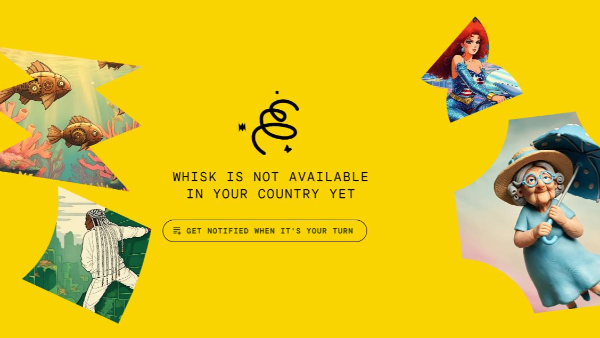Google has declared that its creative picture remixing tool, Google Whisk, is now available in more than 100 countries. This is a significant extension of AI-driven creativity.
It increases artificial intelligence’s influence in creative fields and marks a new age in which Google AI becomes a mainstay in producing visual materials.
Google Whisk is not just another tool; it’s a gateway to a new creative paradigm powered by AI. Initially launched in the U.S., it has captured the imagination of creatives by allowing them to remix images through an intuitive drag-and-drop interface. The tool leverages Google’s cutting-edge AI models, Gemini and Imagen 3, to understand and transform images into unique visual narratives.
Read also: Google X launches AI farming startup, Heritable Agriculture
How Google Whisk works with Gemini and Imagen 3
The magic behind Google Whisk lies in its integration with Gemini, which interprets the visual content of users’ images. Imagen 3 takes over, using the detailed captions generated by Gemini to craft the final visual output. This collaboration between AI technologies eliminates the need for complex text prompts, making creativity accessible to everyone, regardless of their technical expertise.
With its rollout to over 100 countries, Google Whisk bridges gaps across cultures and languages, fostering an environment where global creativity can thrive. However, the tool remains unavailable in certain regions, such as India, Indonesia, the EU, and the U.K., highlighting the complexities of global tech deployment and the ongoing dialogue around AI regulation and ethical use.
Practical uses of Google Whisk in creative industries
Google Whisk stands out for its practical applications in various creative fields. Designers, marketers, and hobbyists can use this AI tool to ideate quickly and produce everything from digital art to promotional materials. The ability to experiment with visuals without deep technical know-how has democratised the creative process, making high-quality content production more inclusive.
Read also: Google Maps’ decision to rename the Gulf of Mexico sparks debate
Exploring ethical boundaries with AI creativity
As exciting as Google Whisk and similar AI tools are, they also prompt a discussion on ethics. How do we ensure that AI-generated content respects intellectual property, privacy, and cultural sensitivities? Google has taken steps to address these concerns, aiming for a balance between innovation and responsibility.
The expansion of Google Whisk signals a future where AI, mainly through tools like Gemini and Imagen 3, will play a pivotal role in art and design. Integrating technology into the creative process enhances productivity and pushes the boundaries of what’s possible in digital art.
The global availability of Google Whisk is more than just an expansion; it’s a testament to how AI is reshaping creativity. By harnessing the power of Gemini and Imagen 3, Google Whisk offers a glimpse into a future where AI isn’t just a tool and collaborator in the artistic process. As we move forward, the creative community eagerly anticipates how tools like Google Whisk will continue to evolve, offering new ways to express and inspire.
















